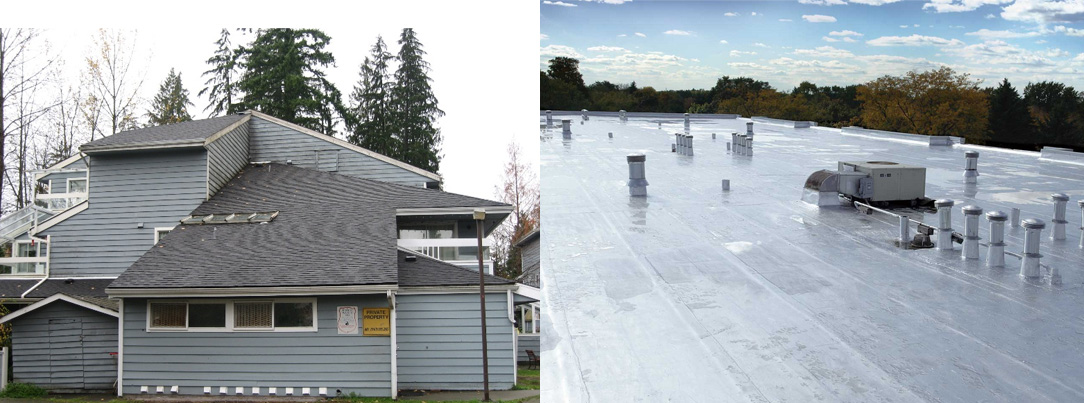Just in case you are new to the construction industry, let’s start with a brief description of residential and commercial construction before we get into the differences between residential and commercial roofs. As you might expect, residential construction refers to your typical family home but some may argue also include townhomes, condos, or any building where people live. On the other hand, commercial construction refers to office buildings, entertainment facilities, hospitals, restaurants, shopping malls, industrial facilities, or any building where business takes place. As you can see, there are likely a broad range of roofs that may cover these buildings and a wide variety of differences with respect to residential and commercial roofs.

One of the main differences between residential and commercial roofs comes down to design. Residential roofs usually (though not always) feature a pitched design where sides of the roof are angled or on a slope. On the other hand, mostly due to ease of installation for larger buildings, commercial roofs typically have a flat design. Not surprisingly, these design elements influence maintenance requirements for residential and commercial roofs. A flat roof is prone to water pooling and therefore usually have more regular maintenance schedules than residential roofs. The surface area and cost of the roof also indicate that more frequent maintenance is important for commercial roofs. Nevertheless, even residential roofs benefit from regular maintenance with respect to lifespan and durability.
Roof design and other factors also impact the materials used in residential and commercial roofing. Residential roofs are usually constructed from shingles or tile that may be constructed from asphalt, wood, slate, and tile. In addition, residential roofs are usually constructed with some sense of aesthetic in mind, so the colour and style of materials may also be a factor in residential roofing. On the other hand, commercial roofs are most often constructed with more practical factors in mind – life expectancy and durability, cost of installation, and cost of maintenance. Still, there are many different commercial roofing materials including ethylene propylene diene monomer and modified bitumen. There are even living roofs available for both commercial and residential buildings, though they tend to be constructed differently and special attention needs to be given to weight bearing structures.
As you can clearly see, there are many factors to consider in residential and commercial roofing so it is always important to work with a roofing professional with the specialized experience you require. While many roofers offer both commercial and residential roofing services, some may only have expertise with a few types of roofs. Make sure to speak to your roofing professional about the services they provide and whether they have the skills necessary to manage your project.

